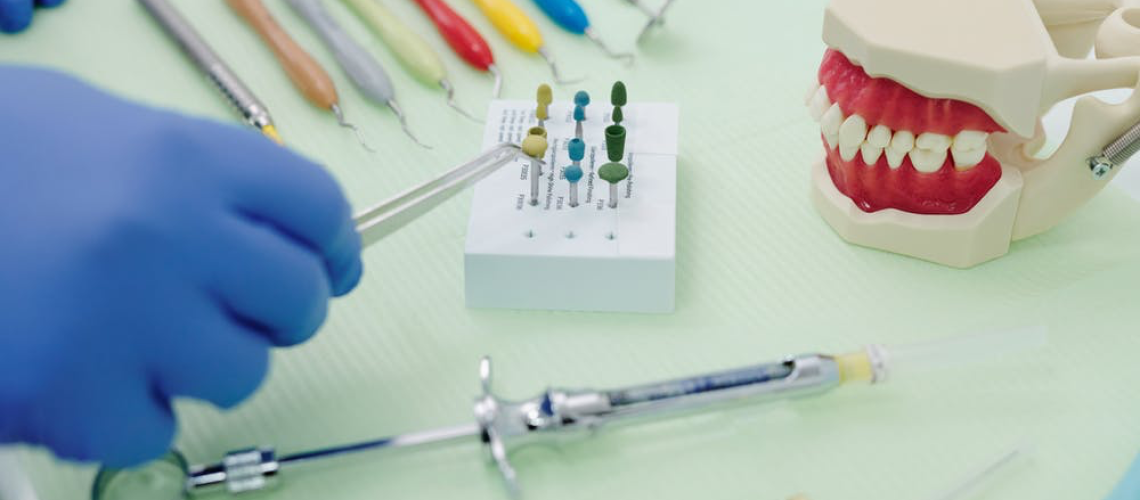Advancements and innovation in sterilization have made many things possible today that were not possible only a short time ago. They’re used in numerous settings around the globe from hospitals and tattoo parlors. The use of autoclaves and similar devices are a significant part of creating and maintaining sustainability in healthcare.
Sustainability in Healthcare
The healthcare industry is in crisis, and there’s no denying it. The industry is to the point where tangible action towards sustainability is vital. It’s no longer able to be put off any longer.
Many factors need to be addressed like budgets, medical waste, and energy waste. Because the medical field is so vast and its operation so broad, it plays a large part in the ecological disaster that we are experiencing right now. An autoclave significantly reduces the need for disposable products and gives an immense shelflife to products that can withstand the heat from the device, saving resources across the board.
Even if healthcare professionals don’t care about saving the planet (which they do), they still have three main aims: to improve the health of the population, improve the care experience, and reduce per capita cost. Keeping those missions at the forefront of their actions, the only logical step forward is to make moves toward creating sustainability in healthcare.
Medical Waste Disposal
One of the most significant issues the healthcare industry faces is figuring out what to do with the waste produced. There are big questions to be answered like what we do with the trillions of tons of garbage we have sitting in landfills. But, professionals must secure the basics of disposal on-site before tackling anything larger.
Often, regulated medical waste is disposed of in ways that are dangerous and harmful. A lot of hazardous materials like scalpels and syringes end up in the regular trash. That action can infect another human, an animal, and the environment alike.
Other facilities attempt to incinerate their waste, but, oftentimes, the equipment is unable to successfully incinerate everything, which releases known toxins and carcinogens into the environment.
Investing in an autoclave to reduce the consumption of single-use products and investing in a quality waste disposal system are the ideal options for nearly all applicable fields.
Related: Tips for Biohazard Disposal During the COVID-19 Crisis
Discovery of Microorganisms
Louis Pasteur was a French microbiologist, biologist, and chemist who studied microbes and sterilization heavily. He published his findings on microbes in 1800. One of his students, Charles Chamberland, had the first autoclave up and running by 1879. Of course, that device was instantly scooped up by hospitals, manufacturing companies specializing in sterilization, universities, and more.
Before this invention, the standard practice of sterilization was to use an open flame or perform chemical washes. The autoclave was absolutely game-changing.
Does your business have the need to improve their medical waste disposal? Make sure you contact Sterilis Solutions to see how their systems can help.
What is an Autoclave?
An autoclave is a piece of equipment used in nearly all scientific fields and industries. It uses high-pressure steam to sterilize objects that can withstand the high temperatures. It turns hazardous waste into non-hazardous waste, and it’s responsible for the level of sterilization that’s able to be achieved today. They’re used in hospitals, medical offices, dentist offices, tattoo parlors, veterinarian clinics, and others concerned with sterilization.
How Do They Work?
An autoclave uses high-pressured steam that reaches extremely high temperatures. Here’s how it works:
First, the air is let out of the chamber, creating a super low-pressure environment within. The reason steam is used is that the device must reach such high temperatures. Dry air is very ineffective at transferring heat, but saturated air (air with water molecules; humidity) is thoroughly effective at transferring heat because of the water droplets in the air. Steam is the tool used to accomplish high heat and sterilization.
Secondly, during the exposure phase, the autoclave closes its exhaust valve resulting in an increase in pressure and temperature. It maintains both the pressure and temperature for the amount of time commanded by the user, resulting in sterilization.
Finally, the chamber carefully releases the pressure through an exhaust valve and the pressure returns to normal. Contents will be hot!
Related: Exposure Control Plans in 2020
Who Needs an Autoclave?
Autoclaves are used around the world in many ways for vastly different types of businesses. The healthcare industry makes up the largest percentage of this device’s sales and use. Doctor’s offices, medical clinics (like dialysis), and veterinary clinics are just a few that you’ll find using autoclaves. You’ll also see them in some tattoo parlors, medical spas, and dental offices.
Many practices that we have as a society today rely upon the sanitization and sterilization process. The fact that not every business that needs an autoclave has one is concerning. Investing in proper equipment is paramount to keeping the public healthy and well.
Evolution of Trends
In the opinion of modern science, autoclaves are pretty prehistoric machines. They’ve been around for quite some time now. However, the technology that operates the autoclaves has remained in a steady state of innovation. The devices are now equipped with cloud connectivity technology, controls have improved, they’ve become more user-friendly, and the ecological impact has been reduced.
Since the age of computers, the devices have gone from basic timers and manual controls to automated computer systems that require barely any user input. Computer innovations have also made considerable advancements in keeping and storing records, data control, and remote monitoring on other devices.
Strides in energy engineering have allowed autoclaves to cut their water usage in half, and some are even able to recycle the water used. There are now also automatic shut-off options when not in use, which also contributes to energy conservation.
Conclusion
The issue of healthcare sustainability is and always will be multifaceted. Autoclaves help reduce the need for disposable products, maintain sterility, and use as little energy and water as possible.
Waste disposal is another hugely important factor. Medical disposal devices have also come a very long way in the recent past. Sterilis Solutions has the leading system in hazardous waste disposal today with its remediation device that turns medical waste into regular trash. It’s able to do so in under 60 minutes! This is the type of equipment that healthcare professionals are working towards getting into their hospitals and clinics. Not only does it save resources: it saves staff time and energy that can be put towards other uses.
Autoclaves and devices like the Sterilis Solutions System are the types of machines that move the workforce as a whole forward into long-term sustainability. We can only hope to see more of the same in other areas in the future.
Want to be part of the movement to help your industry go green? Get in touch with Sterilis Solutions and learn how their system can help.
- How to Return to Work Safely
 As the year 2020 marched forward, it became evident that COVID-19 would force a lockdown across the U.S., if not across the globe. For seemingly endless months, everyone has had … Read more
As the year 2020 marched forward, it became evident that COVID-19 would force a lockdown across the U.S., if not across the globe. For seemingly endless months, everyone has had … Read more - Steps to Take Following a Needlestick
 It’s not difficult to believe that the healthcare industry is a hazardous industry to work in. Even as the current pandemic has relegated most of the country to their homes, … Read more
It’s not difficult to believe that the healthcare industry is a hazardous industry to work in. Even as the current pandemic has relegated most of the country to their homes, … Read more - What Are Some Examples of Biohazard Waste?
 Table of Contents What are some examples of Biohazard Waste? What is Biohazardous Medical Waste? Primary Categories of Medical Biohazard Waste Disposal of Common Biohazardous Waste If the term “biohazardous … Read more
Table of Contents What are some examples of Biohazard Waste? What is Biohazardous Medical Waste? Primary Categories of Medical Biohazard Waste Disposal of Common Biohazardous Waste If the term “biohazardous … Read more
